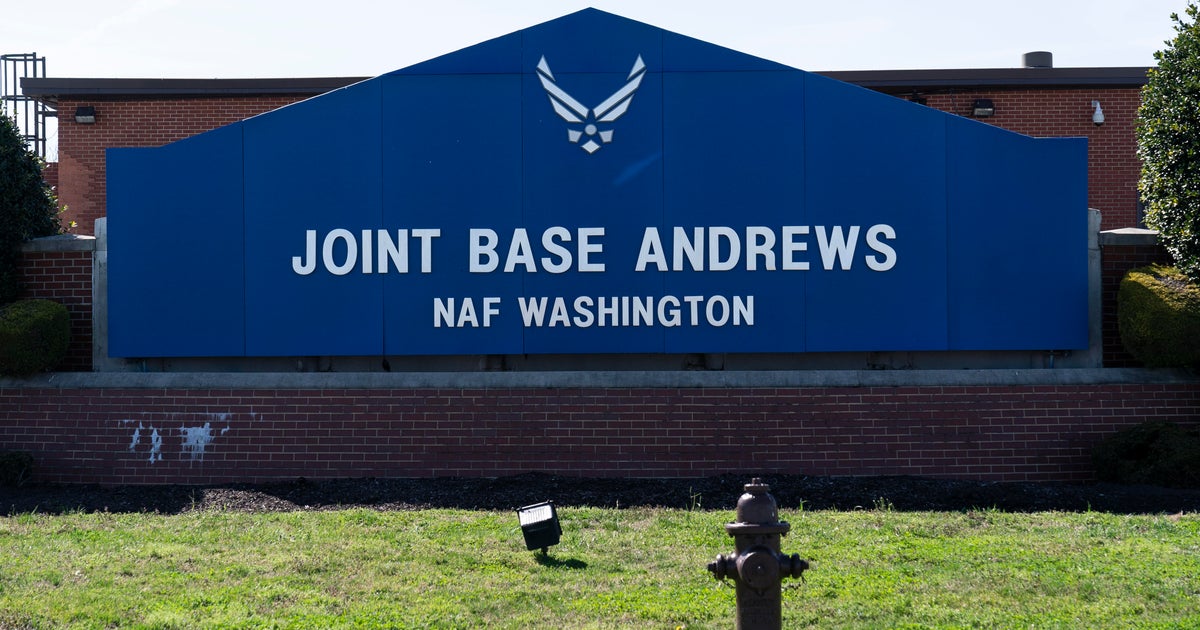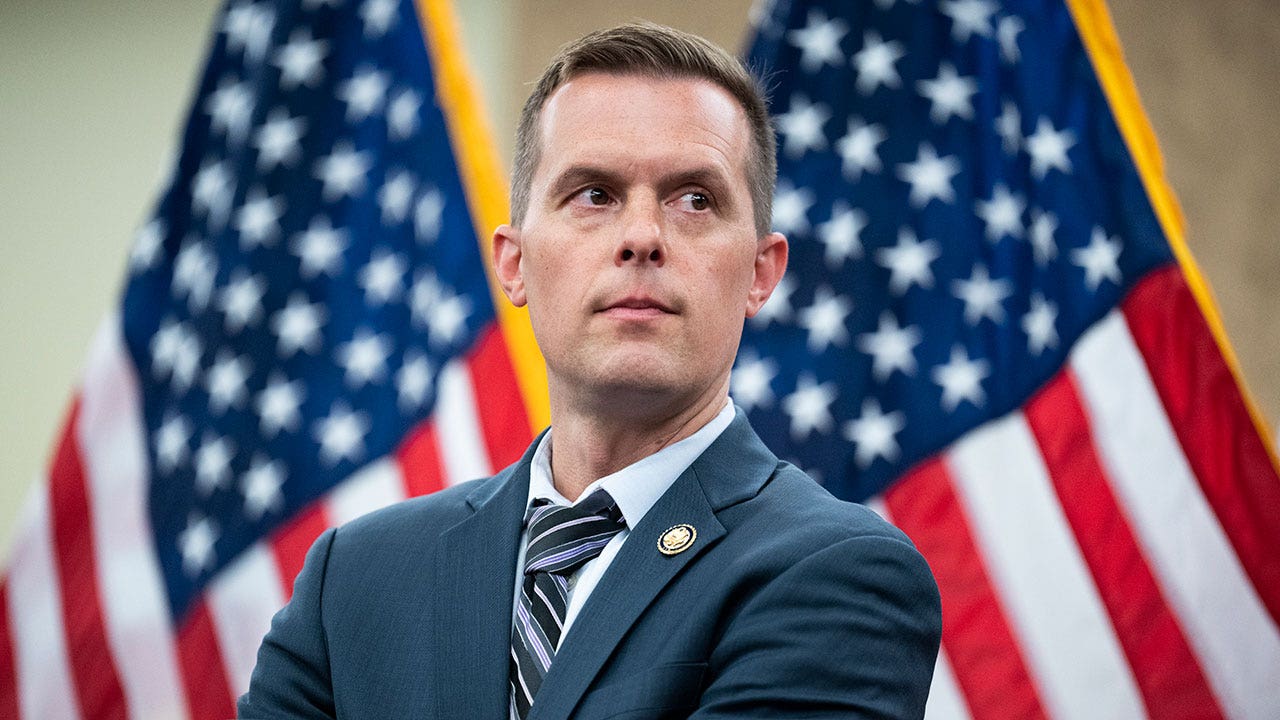News
Trump calls for the impeachment of a judge, as lawsuits pile up

The U.S. Supreme Court is likely to be the final arbiter of many of the challenges to the Trump administration’s actions.
Win McNamee/Getty Images
hide caption
toggle caption
Win McNamee/Getty Images
President Trump on Tuesday called for the impeachment of the judge who ordered a temporary halt to the deportation of alleged Venezuelan gang members.
Without naming James Boasberg, the chief judge of the district court of Washington, D.C., Trump said, “This judge, like many of the Crooked Judges’ I am forced to appear before, should be IMPEACHED!!!” He also called Boasberg a “Radical Left Lunatic of a Judge, a troublemaker and agitator who was sadly appointed by Barack Hussein Obama.”
Boasberg on Saturday halted Trump’s deportation order for two weeks after the president, in a highly controversial move, used the 1798 Enemy Aliens Act, a law not used since World War II, to deport the alleged gang members.

Reacting to the president’s social media post, Chief Justice John Roberts issued a written statement of his own: “For more than two centuries it has been established that impeachment is not an appropriate response to disagreements concerning a judicial decision. The normal appellate review process exists for that purpose.”
Boasberg is known as a highly respected judge and former prosecutor who was previously appointed by Roberts to serve on the super-secret Foreign Intelligence Surveillance Court, which reviews federal government applications to conduct foreign intelligence surveillance, particularly in the United States. He has long ties with conservatives and liberals alike, having shared a house with Supreme Court Justice Brett Kavanaugh at Yale Law School.
The Trump-inspired furor is only the latest in many contretemps between the administration and federal district court judges who are presiding over lawsuits seeking to block the Trump administration’s actions.
As of Tuesday, 127 such lawsuits have been filed against the administration since Trump took office, according to a database maintained at New York University. The cases challenge an enormous range of subjects — from the president’s national security powers to the firing of tens of thousands of federal employees at the Pentagon, the Department of Justice, and agencies created by Congress that are supposed to be independent.
Here is an abbreviated summary of the pending Trump legal cases.
National security cases
The “national security” cases involve the area where the president has the most power.
Most prominently, last Friday Trump invoked the Alien Enemies Act of 1798 to deport several hundred alleged Tren de Aragua gang members from Venezuela — as well as alleged members of the Salvadoran gang Mara Salvatrucha, or MS-13 — by claiming they were part of an illegal invasion. The statute, however, has only been invoked during three periods in American history: The War of 1812, World War I and World War II.

Judge Boasberg on Saturday ordered the administration not to proceed with the deportations for two weeks, but the administration did it anyway. This prompted Boasberg to order the planes that were in the air to turn back, which the administration did not do. The standoff could lead to what many legal experts predict will be a constitutional crisis, a hypothetical (or seemingly, now reality) in which the Trump administration refuses to abide by court orders issued by federal judges.
The Trump administration, however, may be on shaky ground in this case because, according to legal scholars, the Alien Enemies Act was meant to and is written to deal with wartime emergencies only. In addition, even people who should be deported are guaranteed due process under the Constitution, and it is not clear that all the people being deported have had a final hearing. The president has likely picked this battle because it’s provocative, and immigration is an issue that he ran — and won — on.

Trump also ordered the detention and deportation of Columbia University graduate student Mahmoud Khalil for his role in the school’s student-led protests last spring. Khalil is a lawful permanent resident in the United States who is of Palestinian descent. Days after Khalil was taken into custody, immigration officials sent Rasha Alawieh, a doctor who was legally working in the U.S., back to Lebanon, citing her alleged support for Hezbollah.
The administration has also made an effort, so far unsuccessful, to ban automatic citizenship for some people born in the United States. This is a right pretty explicitly guaranteed by the U.S. Constitution for all people born or naturalized in the U.S.
Elon Musk + cases
These cases are what former ambassador Norman Eisen, who is shepherding a lot of the lawsuits, calls “core rule of law” cases.
Many cases involving Elon Musk’s Department of Government Efficiency, or DOGE, allege that Musk, who was hired by the president as a special government employee, may not take actions that Congress has not authorized, such as halting funding to federal agencies. Other cases cast doubt on DOGE’s ability to access to sensitive federal records, which it has been doing in agencies like the IRS and the Social Security Administration.

Also in this category are cases challenging efforts by the Trump administration to undo established labor agreements.
Other challenges seek to prevent the administration from gutting agencies and Cabinet departments by summarily firing tens of thousands of federal employees.
Trump’s attacks on the ‘deep state’
Related, but somewhat different are cases concerning Trump’s attacks on the control of federal agencies. For instance, the president is trying to fire a member of the National Labor Relations board who has three years left on her five-year term. The U.S. Supreme Court in 1935 said the president could only fire agency commissioners for cause, meaning misconduct of some kind. The court’s current conservative supermajority, however, has been eating away at the outer edges of that precedent, so the Trump administration has a decent chance of prevailing when and if these cases get to the Supreme Court.
First Amendment challenges
These are cases that concern the administration’s efforts to make life much more difficult for lawyers who bring cases against the administration, and news organizations that cover them.
The Trump administration revoked the security clearance for the law firm Perkins Coie, known for representing Hillary Clinton and other prominent Democrats. Without security clearances, the firm would be unable to represent its clients as effectively, which could hurt its business.

Trump signed a similar executive order limiting federal contractors’ and the government’s ability to retain Paul Weiss, a major New York law firm, citing the firm’s connection to one of its former lawyers who was involved in leading an investigation into Trump.
Similarly, Trump revoked security clearances for lawyers at Covington & Burling, which represented former special counsel Jack Smith, who led the federal government’s investigation into Trump after the 2020 election. In the same memorandum, Trump ordered the termination of existing contracts between Covington and the federal government.

The Equal Employment Opportunity Commission has targeted 20 major law firms, including Perkins Coie, in an investigation into their DEI practices, though this investigation has not yet been challenged in court.
The Associated Press was also barred from accessing the Oval Office or Air Force One for failing to change its style guide to comply with a Trump executive order renaming the Gulf of Mexico to the Gulf of America. After releasing a statement raising alarm bells that “the Trump administration would punish AP for its independent journalism,” the AP sued the administration to regain access.

News
Video: The Decline of America’s Largest Environmental Organization

new video loaded: The Decline of America’s Largest Environmental Organization
By David A. Fahrenthold, Leila Medina, Karen Hanley, Laura Bult, Joey Sendaydiego, Christina Thornell, Zach Wood and Jon Miller
November 7, 2025
News
2 Joint Base Andrews buildings evacuated after suspicious package opened, base says

Two buildings on Joint Base Andrews were evacuated Thursday after someone opened a suspicious package in one of them, a base spokesperson told CBS News.
The spokesperson said that at about 1:00 p.m. EST, the building and one connected to it were evacuated “as a precaution,” adding that “a cordon was established around the area.
“Joint Base Andrews first responders were dispatched to the scene, determined there were no immediate threats, and have turned the scene over to Office of Special Investigations. An investigation is currently ongoing.”
The base, in Prince George’s County, Maryland, is the home base of Air Force One.
News
End of The Line: how Saudi Arabia’s Neom dream unravelled

Executives raised myriad questions with management. From the outset, “we did a fair amount of warnings to make sure that the leadership, especially at the board level, were aware of these risks”, said the senior executive.
Where would the 9mn people due to populate The Line come from? How quickly could they be reasonably expected to arrive? Could construction and manufacturing start quickly enough? Would the levels of imports required overheat the economy? What if oil prices sank, drying up Saudi Arabia’s key source of revenue? What if the necessary materials could not be found? And did the Gulf nation really have the scientific and technical expertise to execute such a vast scheme?
Yet the pressure to deliver was relentless. The board expected the chief executive to “move things very quickly”, said the senior executive. “Dates had been given to the crown prince about what was achievable, but without the detail of knowing how it could be done,” said the senior design manager. When those dates were made public, there would be a loss of face if they weren’t met. “That’s where tensions grew.”
Staff were “being put into a position of effectively having to lie about the timescales and the cost of delivering the vision”, they added.
What remains
The Line — or at least its beginnings — can already be seen from space. Satellite imagery shows excavation and tunnelling work for the railway system, the “spine” connecting The Line to Neom International Airport, stretching for 150km — from the coast into the Hejaz mountains.
In a valley between two mountain ranges, levelling work is evident for the airport and its runways. “In true Neom fashion, there’s a mountain at the end of the runway that had to be blown up,” said the senior architect. Construction work has now stopped on both the spine and the airport. No new target for the airport has been set.
The foundations for The Line’s first modules — perhaps the largest piles ever laid by man — are also visible, waiting to support the world’s largest occupied building, if it ever arrives. The village of Qayal, which was a few kilometres from the “hidden marina”, has been razed. Fifteen members of the Huwaitat tribe who protested against their eviction were sent to prison, some for up to 50 years, and three others were sentenced to death, according to human rights observers.
At the marina, excavations by late last year had dug out 100mn cubic metres of soil, the equivalent of 40 Great Pyramids of Giza. Ships will access it via a canal leading more than a kilometre inland from the coast.
The chandelier, the upside-down office building hanging from the giant arch above the marina, remains in the plans. But Neom no longer intends to base its headquarters there. Neom’s deputy chief executive Rayan Fayez acknowledged last month that the project’s budget “evolves every day”, adding that it was a good point to “reassess what worked and what hasn’t worked”.
With the goal now to build just three of the 20 modules originally planned, the ambition for The Line’s first phase is a faint echo of what it once was. One person familiar with the project said work had effectively stopped, with efforts now focused on completing a few small buildings around the marina. Some of the earlier piling work has been covered with sand.
“I think as a thought experiment, great,” said one urban planning expert who works in Saudi Arabia. “But don’t build thought experiments.”
-

 Milwaukee, WI1 week ago
Milwaukee, WI1 week agoLongtime anchor Shannon Sims is leaving Milwaukee’s WTMJ-TV (Channel 4)
-

 Culture1 week ago
Culture1 week agoVideo: Dissecting Three Stephen King Adaptations
-

 Austin, TX1 day ago
Austin, TX1 day agoHalf-naked woman was allegedly tortured and chained in Texas backyard for months by five ‘friends’ who didn’t ‘like her anymore’
-

 Seattle, WA1 week ago
Seattle, WA1 week agoFOX 13’s Aaron Levine wins back-to-back Jeopardy! episodes
-

 Seattle, WA5 days ago
Seattle, WA5 days agoESPN scoop adds another intriguing name to Seahawks chatter before NFL trade deadline
-

 Education1 week ago
Education1 week agoOpinion | New York City Mayoral Candidates: Who Would Be Best?
-

 San Diego, CA1 week ago
San Diego, CA1 week agoAdd Nick Hundley, Ruben Niebla to list of Padres’ managerial finalists
-
Business1 week ago
Disneyland Resort lays off 100 people in Anaheim












